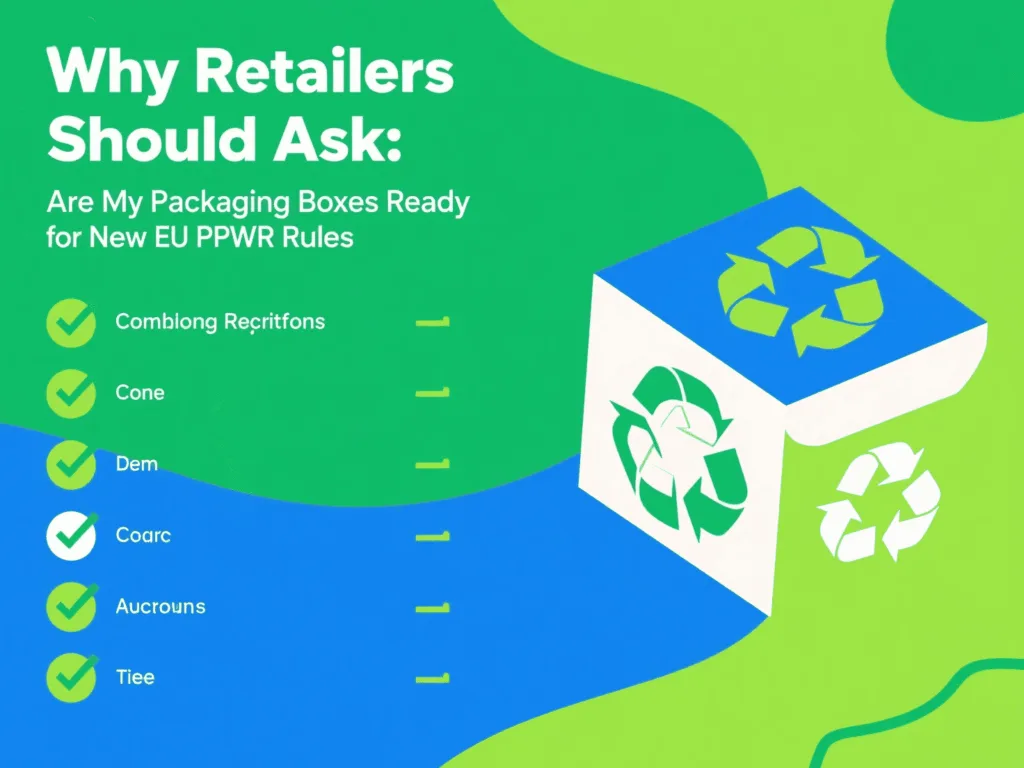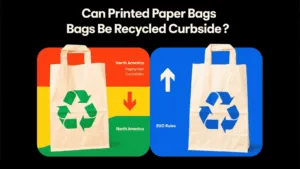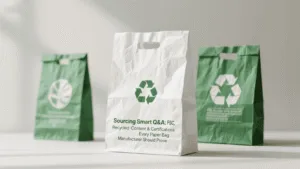You’ve heard whispers about new EU regulations, but they seem complex and distant. It feels easier to just continue with your current packaging, hoping it won’t become a problem. But ignoring these rules is a gamble you can’t afford to take.
Yes, your boxes need to be ready now. The EU’s Packaging and Packaging Waste Regulation (PPWR) introduces strict rules on recyclability, empty space, and recycled content. Non-compliance could lead to your products being turned away at EU borders, resulting in massive losses.
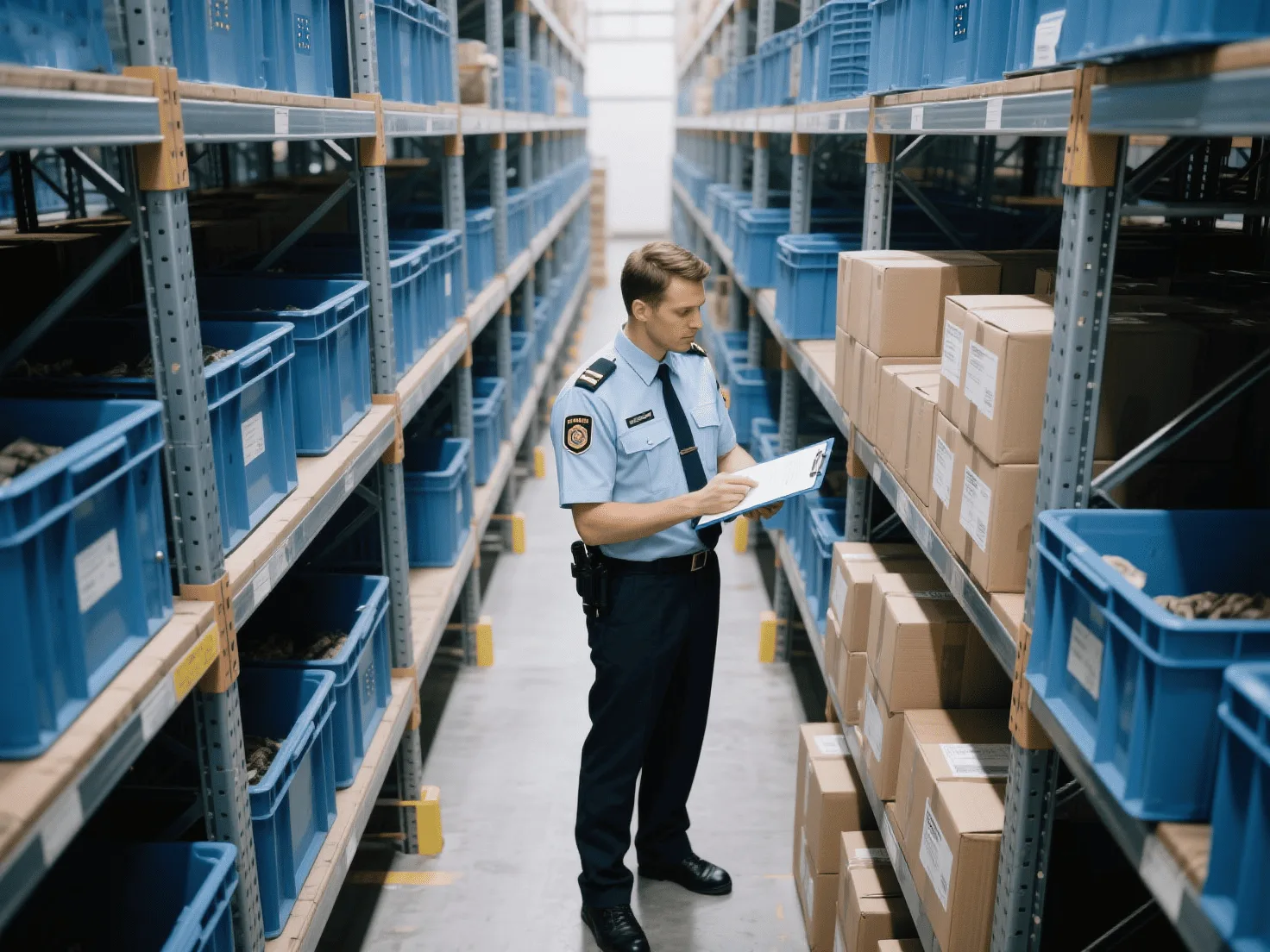
Just last month, I spoke with a rapidly growing skincare brand based in the US. They had just secured a major distribution deal with a German retailer—a huge win for them. Their team was celebrating until they got an urgent email from their new partner with a long checklist referencing the PPWR. Their beautiful boxes, which used a magnetic closure and a soft-touch plastic laminate, were suddenly non-compliant. The panic was real. They had a warehouse full of packaging they could no longer use for their biggest market. This isn’t a future problem; it’s happening right now. We had to work fast to re-engineer their cosmetic packaging to be fully recyclable without losing its premium feel. It was a stressful, expensive lesson that could have been avoided with a little foresight.
What Does ‘Designed for Recycling’ Actually Mean for Your Boxes?
You assume your standard paperboard box is recyclable, but it might not be. Hidden elements like plastic coatings, magnets, or excessive glues can render your packaging non-recyclable under the new, stricter EU standards, forcing a costly and sudden redesign.
"Designed for Recycling" means your entire package must meet a high-performance grade in recyclability by 2030. This requires using mono-materials, avoiding non-recyclable components, and ensuring all parts can be easily separated by consumers and recycling facilities.
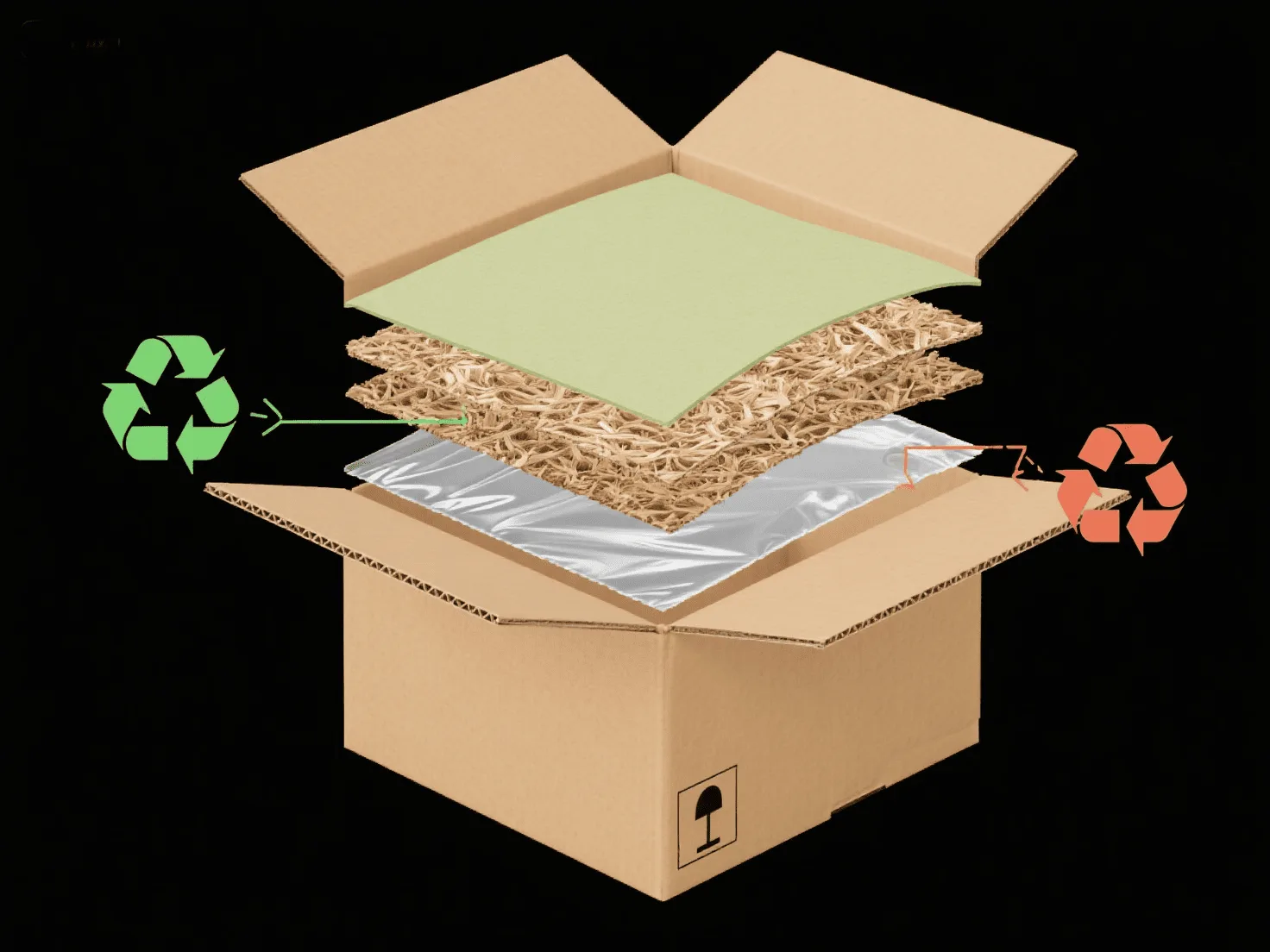
The PPWR aims to stop "wish-cycling," where consumers put something in the recycling bin hoping it gets recycled. By 2035, all packaging must be recyclable "at scale." This means the materials and design you choose must be compatible with the actual recycling infrastructure available across the EU. For paper boxes, this is a critical detail. A box isn’t just paper; it’s the sum of its parts. A heavy plastic lamination might give a nice sheen, but it contaminates the paper recycling stream. Embedded magnets for closures are another common problem. The new rules force a shift in thinking from "Can this be recycled in theory?" to "Will this be recycled in practice?" As a packaging provider, my conversations with clients now start with material composition. We scrutinize every element—inks, glues, and finishes—to ensure the final product doesn’t just look good but can successfully re-enter the circular economy.
PPWR-Friendly vs. Problematic Box Features
| Feature | Problematic Example1 (Likely Non-Compliant) | PPWR-Friendly Alternative2 |
|---|---|---|
| Coating/Lamination | Glossy or soft-touch plastic (OPP) lamination. | Water-based aqueous coating; fully recyclable varnish. |
| Closures | Embedded magnets or complex plastic clasps. | Friction-fit closures, paper-based tabs, or removable stickers. |
| Windows | Non-detachable plastic (PVC) windows. | Windows made from PLA (compostable) or designed to be easily removed. |
| Inks & Foils | Heavy metal-based inks; excessive, non-recyclable foil coverage. | Soy/vegetable-based inks; ensuring foil covers less than a specified surface area. |
Is Your E-commerce Box Guilty of Too Much Empty Space?
Using just a few standard box sizes seems efficient for inventory. But shipping a small item in a large box filled with plastic air pillows is wasteful, expensive, and creates a poor unboxing experience. Now, the EU is making it a compliance issue.
Yes, it probably is. The PPWR proposes a maximum 40% "empty space ratio." This forces e-commerce brands to "right-size" their packaging, minimizing void fill and reducing waste. This rule directly impacts logistics, material costs, and shipping efficiency.

The 40% void ratio rule is one of the most impactful parts of the PPWR for the e-commerce world. For years, the primary penalty for shipping air was financial—carriers charge based on dimensional weight, making oversized boxes costly. Now, it’s also a regulatory risk. A shipment arriving in the EU with excessive empty space could be flagged for non-compliance. This is forcing brands to abandon the "one-size-fits-all" approach. I’ve been working with clients on comprehensive packaging audits. We analyze their entire product range and create a "box-on-demand" strategy or a streamlined set of 5-7 optimized box sizes that cover 95% of their SKUs. This not only ensures PPWR compliance but also leads to significant cost savings on materials and shipping. The focus of shipping packaging is shifting from just containment to intelligent, data-driven optimization. It’s a change that benefits the planet and the bottom line.
Are Your Material and Labeling Choices Compliant with PPWR Mandates?
You’re focused on getting your product to market. You trust your supplier, but are you certain the materials they use are documented? Are the recycling symbols on your box correct for the EU? A simple mistake in labeling or material claims could halt your entire European operation.
The PPWR mandates specific recycled content percentages for plastic packaging and introduces new, harmonized EU-wide labels for sorting. This requires complete supply chain transparency and a redesign of your packaging artwork to ensure you’re compliant and clear.
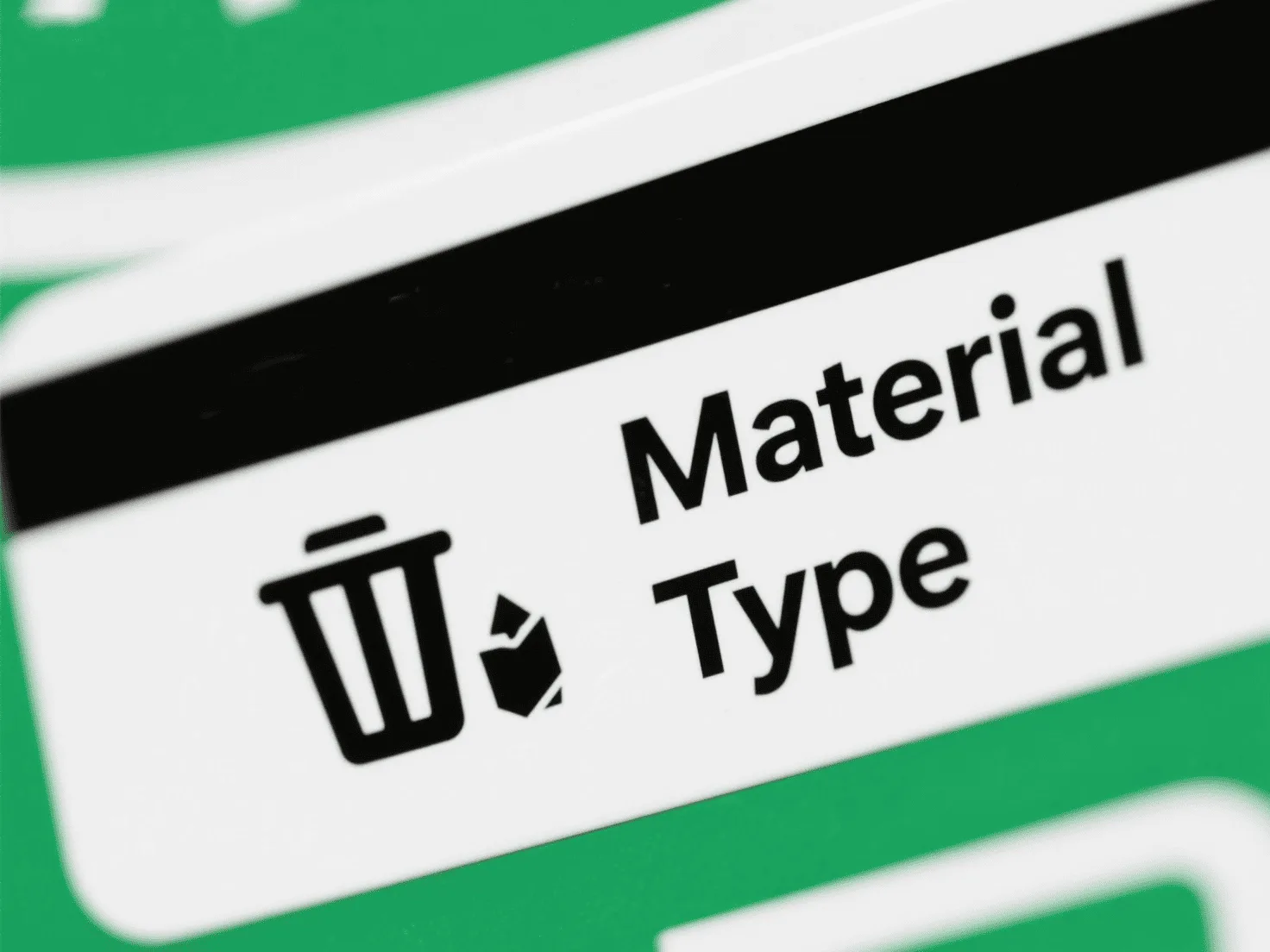
While the strictest mandatory recycled content targets in the PPWR are aimed at plastics, the regulation creates a powerful "halo effect." Buyers, retailers, and consumers now expect and demand proof of recycled content across all materials, including paper. At Omet Packaging, our FSC certification has become more important than ever, as it provides a verifiable chain of custody for responsible sourcing. Beyond materials, the PPWR’s call for harmonized labeling is a game-changer. The familiar "Green Dot" will no longer be enough. New labels will specify the packaging material and which bin it should go into. This means every company selling in the EU will need to update their print files. It’s a detail that is easy to overlook but critical for compliance. We are already advising our clients to prepare for these artwork changes, ensuring their tags and stickers and box printing are ready for the new system. It’s about creating clarity for the consumer and accountability for the brand.
Conclusion
The EU’s PPWR is not a distant threat; it’s a present-day reality for any retailer selling in Europe. Preparing your packaging now by focusing on true recyclability, optimizing box size to eliminate empty space, and ensuring compliant materials and labels is essential for uninterrupted market access.
Feeling overwhelmed by the new rules? Let’s make a plan together. Contact us to audit your packaging and ensure it’s ready for the future.
Explore more on this topic with our articles on balancing luxury with eco-conscious materials.
FAQ
When do the PPWR rules come into full effect?
The PPWR is being implemented in phases. Key deadlines include the "designed for recycling" mandate by 2030 and the requirement for all packaging to be recyclable at scale by 2035. However, many retailers and EU countries are adopting these principles now, so it’s best to act immediately.
Does the PPWR apply to businesses in the UK or USA selling to the EU?
Yes. If your product is sold within the EU market, its packaging must comply with the PPWR, regardless of where your company is based. The rules apply to the packaging placed on the EU market.
Is paper packaging a ‘safe’ choice under the PPWR?
Paper packaging is well-positioned because it is widely recycled and avoids the specific plastic mandates. However, it is not automatically compliant. Paper packaging must still meet the strict recyclability criteria (e.g., no plastic laminates) and the void space restrictions.
What is the first step my company should take to prepare for the PPWR?
The first and most crucial step is to conduct a comprehensive packaging audit. Analyze every component of your current packaging—materials, glues, inks, finishes, and dimensional efficiency—against the requirements of the PPWR. This will identify your compliance gaps and create a clear roadmap for necessary changes.

